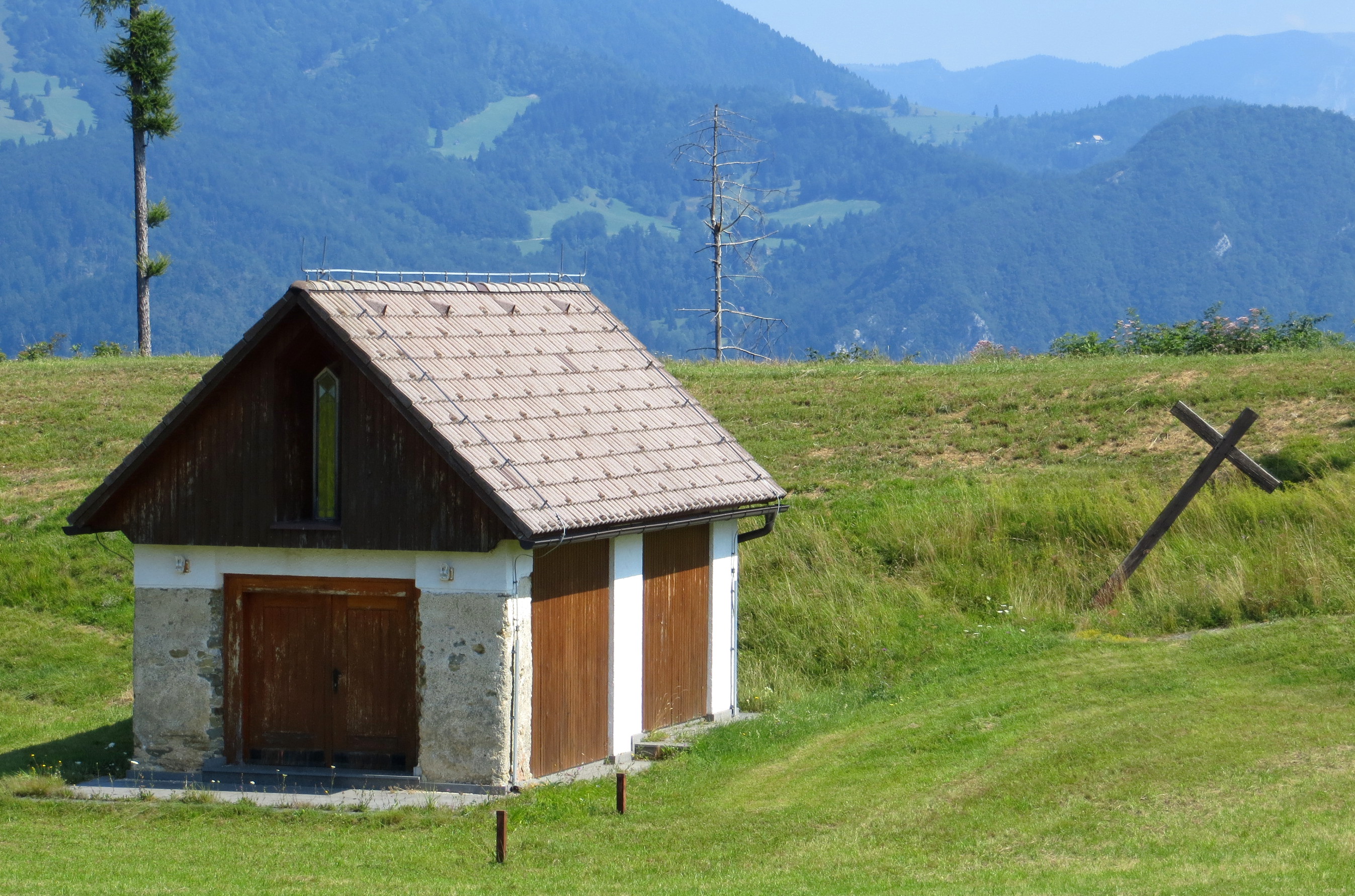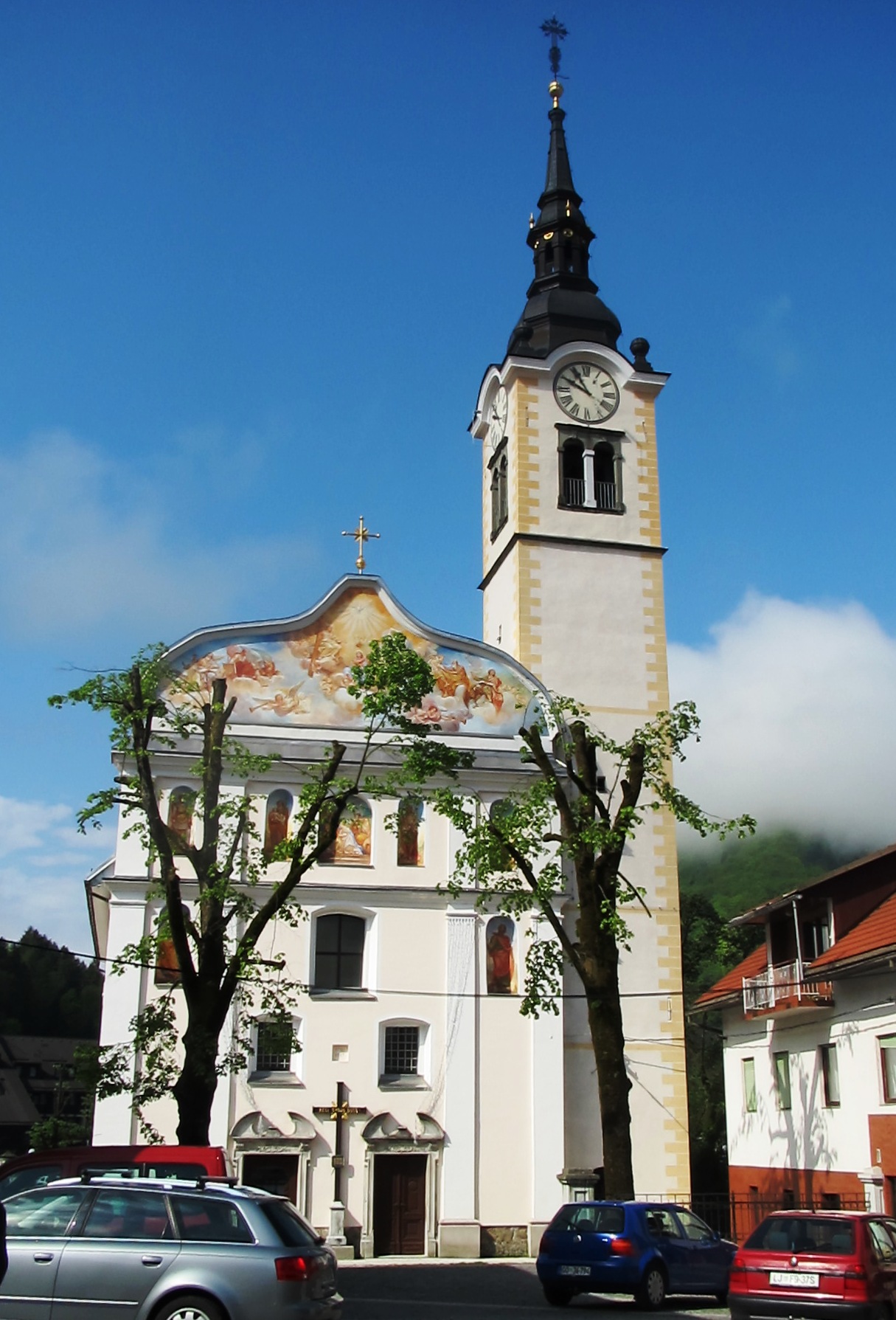Cerkno - Labinje on:
[Wikipedia]
[Google]
[Amazon]
Cerkno (; ; ) is a small town in the
 Cerkno is the site of a
Cerkno is the site of a
 The
The Koper Diocese list of churches
Cerkno on Geopedia
Cerkno municipal site
{{Authority control Populated places in the Municipality of Cerkno
Littoral
The littoral zone, also called litoral or nearshore, is the part of a sea, lake, or river that is close to the shore. In coastal ecology, the littoral zone includes the intertidal zone extending from the high water mark (which is rarely i ...
region of Slovenia
Slovenia, officially the Republic of Slovenia, is a country in Central Europe. It borders Italy to the west, Austria to the north, Hungary to the northeast, Croatia to the south and southeast, and a short (46.6 km) coastline within the Adriati ...
.
It has around 2,000 inhabitants and is the administrative centre of the Cerkno Hills
The Cerkno Hills ( or ) is a transitional region between the Alps, Alpine and the Dinarides, Dinaric landscape, centered on Cerkno in northwestern Slovenia. Several passes in this area connect the Poljane Valley and the Selca Valley with the Idrijc ...
. It is the seat of the Municipality of Cerkno
The Municipality of Cerkno () is a municipality in the Slovenian Littoral, Littoral region of Slovenia.
The seat of the municipality is the town of Cerkno. The municipality has around 5,000 people.
History
Historically, the Cerkno Hills belonged ...
.
Cerkno is a small but important local cultural center in the traditional Littoral
The littoral zone, also called litoral or nearshore, is the part of a sea, lake, or river that is close to the shore. In coastal ecology, the littoral zone includes the intertidal zone extending from the high water mark (which is rarely i ...
region near Idrija
Idrija (, in older sources ''Zgornja Idrija''; , ) is a town in western Slovenia. It is the seat of the Municipality of Idrija. Located in the traditional region of the Slovene Littoral and in the Gorizia Statistical Region, it is notable for it ...
. It is known for the '' Laufarija'' carnival
Carnival (known as Shrovetide in certain localities) is a festive season that occurs at the close of the Christian pre-Lenten period, consisting of Quinquagesima or Shrove Sunday, Shrove Monday, and Shrove Tuesday or Mardi Gras.
Carnival typi ...
, a spring festival with carved wooden masks; for Franja Partisan Hospital
Franja Partisan Hospital () was a secret World War II hospital at Dolenji Novaki near Cerkno in western Slovenia. It was run by the Slovene Partisans from December 1943 until the end of the war as part of a broadly organized resistance movement ...
(''Partizanska bolnica Franja''); for a Partisan
Partisan(s) or The Partisan(s) may refer to:
Military
* Partisan (military), paramilitary forces engaged behind the front line
** Francs-tireurs et partisans, communist-led French anti-fascist resistance against Nazi Germany during WWII
** Ital ...
hospital from World War II; and as a ski resort.
Name
Cerkno was attested in written records in 1257 as ''Curchinitz'' (and as ''Chyrchayn'' in 1299, ''Circhinç'' in 1337, and ''Circhiniz'' in 1486). The modern Slovene name is anellipsis
The ellipsis (, plural ellipses; from , , ), rendered , alternatively described as suspension points/dots, points/periods of ellipsis, or ellipsis points, or colloquially, dot-dot-dot,. According to Toner it is difficult to establish when t ...
of ''*Cerьkъvьno (selo/polje)''; literally, 'church (village/field)'. The medieval attestations of the name indicate that the settlement was also once called ''Cerknica''. The name indicates that the place was formerly a church property.
History
Historically, theCerkno Hills
The Cerkno Hills ( or ) is a transitional region between the Alps, Alpine and the Dinarides, Dinaric landscape, centered on Cerkno in northwestern Slovenia. Several passes in this area connect the Poljane Valley and the Selca Valley with the Idrijc ...
belonged to Tolmin
Tolmin (; ,trilingual name ''Tolmein, Tolmino, Tolmin'' inGemeindelexikon, der im Reichsrate Vertretenen Königreiche und Länder. Bearbeit auf Grund der Ergebnisse der Volkszählung vom 31. Dezember 1900. Herausgegeben von der K.K. Statistische ...
County. In the 16th century, the area came under Habsburg
The House of Habsburg (; ), also known as the House of Austria, was one of the most powerful dynasties in the history of Europe and Western civilization. They were best known for their inbreeding and for ruling vast realms throughout Europe d ...
rule, and was included in the County of Gorizia and Gradisca
The Princely County of Gorizia and Gradisca (; ; ), historically sometimes shortened to and spelled "Goritz", was a crown land of the Habsburg dynasty within the Austrian Littoral on the Adriatic Sea, in what is now a multilingual border area of ...
. After the end of World War I
World War I or the First World War (28 July 1914 – 11 November 1918), also known as the Great War, was a World war, global conflict between two coalitions: the Allies of World War I, Allies (or Entente) and the Central Powers. Fighting to ...
, the area was occupied by the Italian Army
The Italian Army ( []) is the Army, land force branch of the Italian Armed Forces. The army's history dates back to the Italian unification in the 1850s and 1860s. The army fought in colonial engagements in China and Italo-Turkish War, Libya. It ...
, and then officially annexed to Italy
Italy, officially the Italian Republic, is a country in Southern Europe, Southern and Western Europe, Western Europe. It consists of Italian Peninsula, a peninsula that extends into the Mediterranean Sea, with the Alps on its northern land b ...
in 1920. Between 1920 and 1943, it was part of the administrative region known as the Julian March
The Julian March ( Croatian and ), also called Julian Venetia (; ; ; ), is an area of southern Central Europe which is currently divided among Croatia, Italy, and Slovenia.
. After the Italian armistice
The Armistice of Cassibile ( Italian: ''Armistizio di Cassibile'') was an armistice that was signed on 3 September 1943 by Italy and the Allies, marking the end of hostilities between Italy and the Allies during World War II. It was made public ...
in September 1943, Cerkno was liberated by the Yugoslav Partisans
The Yugoslav Partisans,Serbo-Croatian, Macedonian language, Macedonian, and Slovene language, Slovene: , officially the National Liberation Army and Partisan Detachments of Yugoslavia sh-Latn-Cyrl, Narodnooslobodilačka vojska i partizanski odr ...
and became one of the most important centres of Partisan resistance in the Slovenian Littoral
The Slovene Littoral, or simply Littoral (, ; ; ), is one of the traditional regions of Slovenia. The littoral in its name – for a coastal-adjacent area – recalls the former Austrian Littoral (''Avstrijsko Primorje''), the Habsburg poss ...
.
Mass grave
 Cerkno is the site of a
Cerkno is the site of a mass grave
A mass grave is a grave containing multiple human corpses, which may or may Unidentified decedent, not be identified prior to burial. The United Nations has defined a criminal mass grave as a burial site containing three or more victims of exec ...
associated with the Second World War. The Lajše Mass Grave () is located south of the town, in a shaft on the edge of the woods on the eastern slope of Lajše Hill. It contains the remains of 14 civilian victims (one escaped) that were suspected of anti-communist activity and were murdered on 6 February 1944 by the Partisans. They were killed in revenge for an attack on a Communist Party training school in Cerkno on 27 January 1944 that left 47 dead.
Churches
parish church
A parish church (or parochial church) in Christianity is the Church (building), church which acts as the religious centre of a parish. In many parts of the world, especially in rural areas, the parish church may play a significant role in com ...
in the town is dedicated to Saint Anne
According to apocrypha, as well as Christianity, Christian and Islamic tradition, Saint Anne was the mother of Mary, mother of Jesus, Mary, the wife of Joachim and the maternal grandmother of Jesus. Mary's mother is not named in the Bible's Gosp ...
and belongs to the Diocese of Koper. The church consist of a rectangular presbytery, a wide rectangular nave, and a belfry north of the front wall. The church dates from 1714 and has been attributed to the builder Matija Maček (c. 1657–1737) from the Poljane Valley
Poljane may refer to the following places:
In Croatia:
* Poljane, Brod-Posavina County, a village near Dragalić
* Poljane, Primorje-Gorski Kotar County, a village near Opatija
In Kosovo:
* Poljane, Istok, a settlement in the Municipality o ...
. A second church in the settlement is dedicated to Saint Bartholomew
Bartholomew was one of the twelve apostles of Jesus according to the New Testament. Most scholars today identify Bartholomew as Nathanael, who appears in the Gospel of John (1:45–51; cf. 21:2).
New Testament references
The name ''Bartholomew ...
.Notable people
Notable people that were born or lived in Cerkno include: * France Bevk (1890–1970), writer * (1854–1931), Archbishop of Gorizia * Milica Kacin-Wohinz (1930–2021), historian * (born 1947), historian * Franc Močnik (1814–1892), mathematician * Janez Podobnik (born 1959), politician * (born 1960), politician * Rafael Podobnik (born 1942), photographerSee also
* Cerkno Ski ResortReferences
External links
*Cerkno on Geopedia
Cerkno municipal site
{{Authority control Populated places in the Municipality of Cerkno